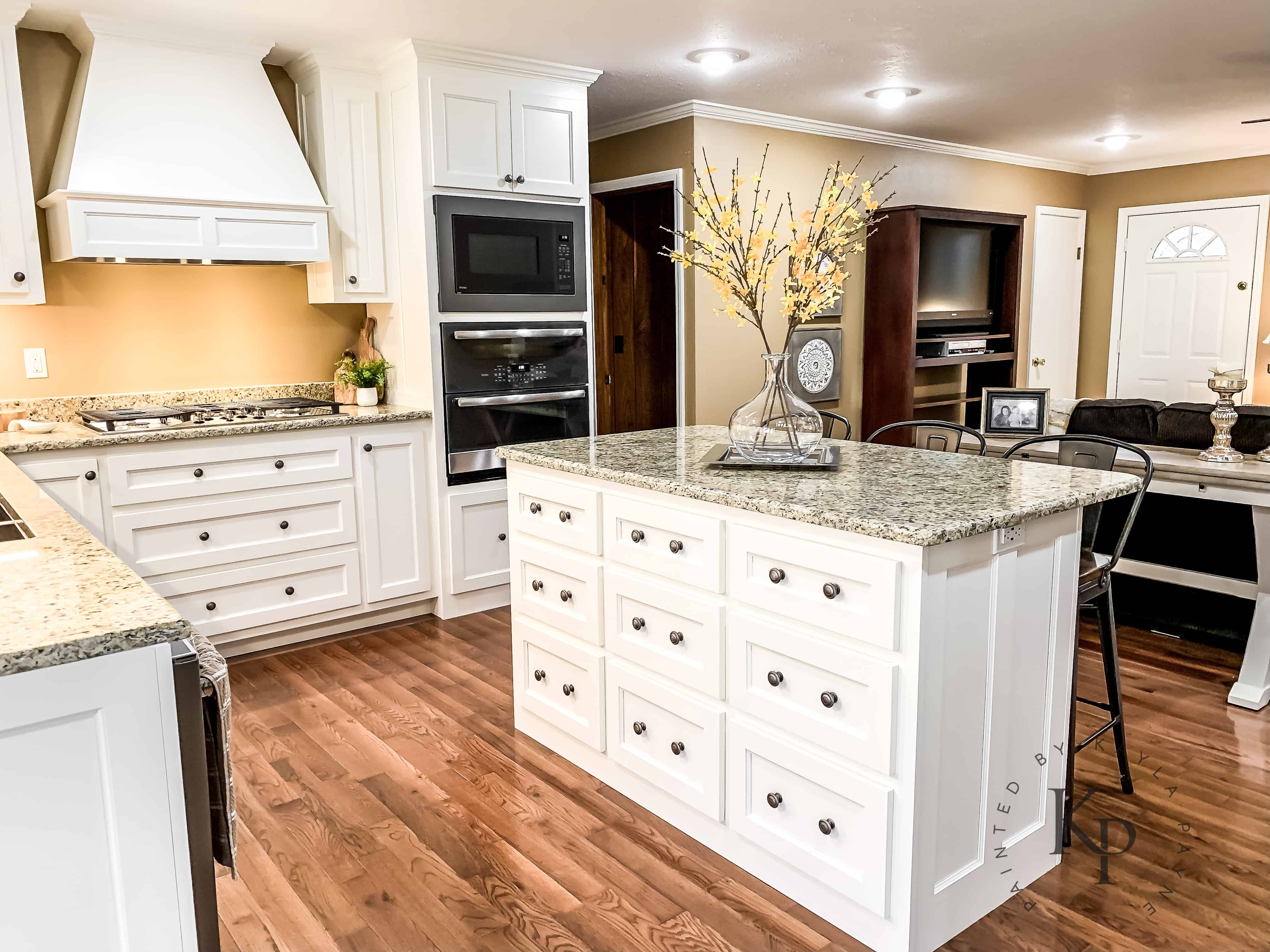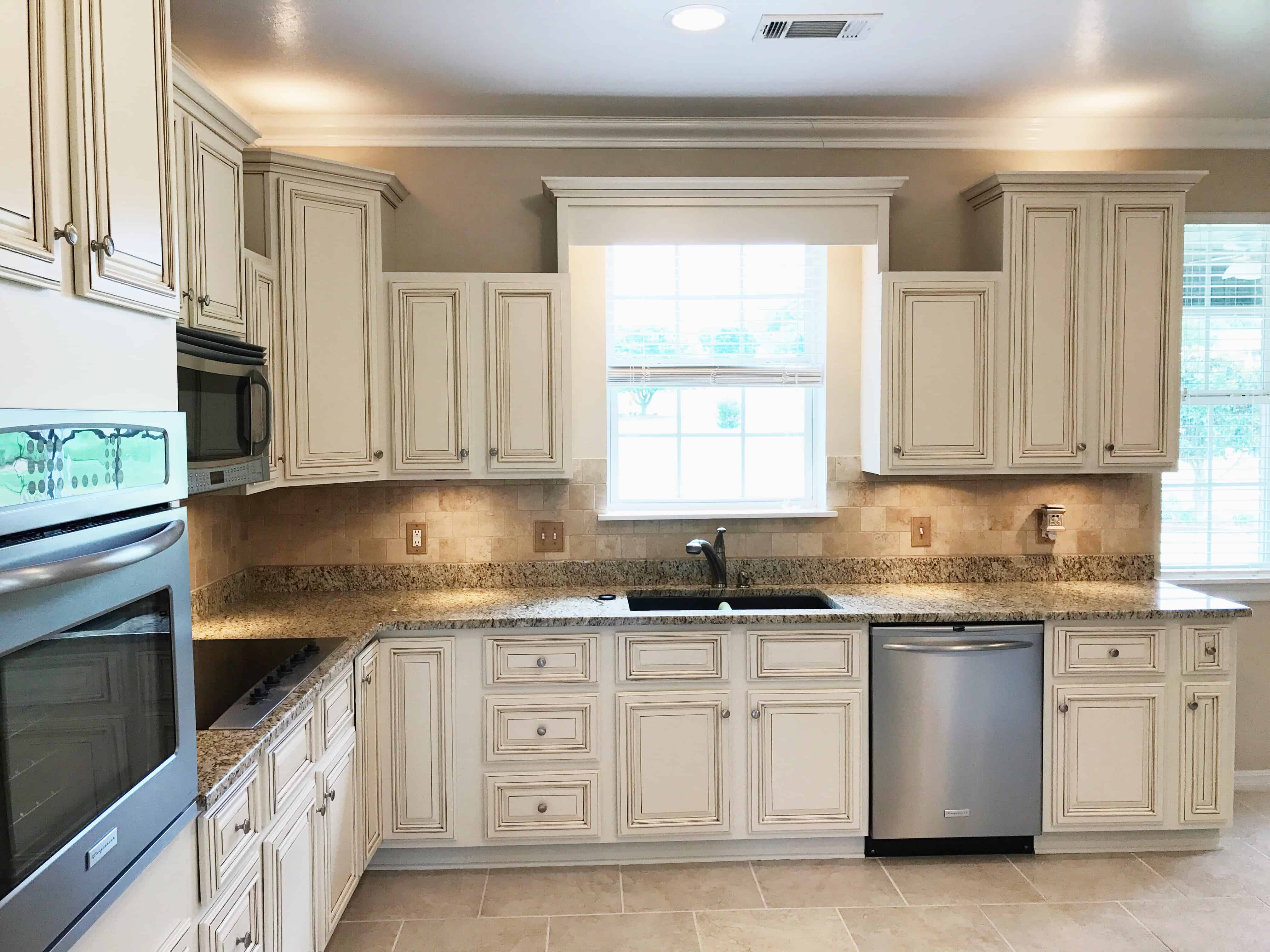Top 3 Best BM White Paints for Kitchen Cabinets

Choosing the perfect white paint for your kitchen cabinets can feel overwhelming, given the sheer number of options available. Benjamin Moore offers several excellent choices, each with subtle nuances that can dramatically impact the overall look and feel of your space. This guide focuses on three top contenders, comparing their characteristics to help you make an informed decision.
Benjamin Moore’s Top Three White Paints Compared
Below is a comparison of three popular Benjamin Moore white paint choices for kitchen cabinets, considering undertones, sheen options, and durability. The subtle differences in undertone can significantly change the perceived warmth or coolness of your kitchen. Sheen affects the light reflection and the overall finish’s ease of cleaning. Durability is crucial for high-traffic areas like kitchens.
| Paint Name | Undertones | Sheen Options | Durability Assessment |
|---|---|---|---|
| White Dove OC-17 | Warm, creamy, slightly gray | Matte, Eggshell, Satin, Semi-gloss, High-gloss | Excellent; durable and easy to clean, especially in satin or semi-gloss. |
| Simply White OC-117 | Crisp, clean, slightly cool | Matte, Eggshell, Satin, Semi-gloss, High-gloss | Excellent; similar durability to White Dove. |
| Chantilly Lace OC-65 | Bright, clean, very slightly cool | Matte, Eggshell, Satin, Semi-gloss, High-gloss | Excellent; known for its bright, clean finish and good durability. |
Application Process for Benjamin Moore Cabinet Paints
Proper surface preparation is key to achieving a professional-looking and long-lasting finish. These steps are crucial regardless of the chosen Benjamin Moore white paint.
Best bm white for kitchen cabinets – The following steps ensure a smooth, even application and a beautiful final result. Remember to always follow Benjamin Moore’s specific instructions on the paint can.
- Clean the cabinets thoroughly: Remove grease, grime, and any loose paint using a degreaser and a clean cloth or sponge. Allow to dry completely.
- Lightly sand the surfaces: This helps create a better surface for the primer and paint to adhere to. Use fine-grit sandpaper (220 grit) and wipe away dust with a tack cloth.
- Prime the cabinets: Use a high-quality primer designed for cabinets, such as Benjamin Moore’s Fresh Start Primer. This will ensure better adhesion and color consistency. Apply two coats, allowing each to dry completely.
- Apply the paint: Use a high-quality brush or roller designed for smooth surfaces. Apply two coats of Benjamin Moore paint, allowing each coat to dry completely before applying the next. Use long, even strokes for a smooth finish.
Kitchen Style Examples for Each Paint
The choice of white paint can dramatically influence the overall feel of your kitchen. The undertones of each paint will interact differently with the other design elements.
White Dove OC-17 in a traditional kitchen with shaker-style cabinets, a marble backsplash, and warm-toned wood countertops. The creamy undertones complement the natural warmth of the materials.
Simply White OC-117 in a modern kitchen with sleek, flat-panel cabinets, a white subway tile backsplash, and stainless steel countertops. The crisp, clean undertones enhance the modern aesthetic.
Chantilly Lace OC-65 in a bright and airy kitchen with white cabinets, a white quartz countertop, and a light-colored backsplash. The bright white enhances the spaciousness and light.
Exploring Different Sheens for White Kitchen Cabinets
Choosing the right sheen for your white kitchen cabinets is crucial, as it significantly impacts the final look and feel of your space. The sheen level determines how much light reflects off the surface, influencing the perceived color, texture, and overall atmosphere of your kitchen. Different sheens also offer varying levels of durability and ease of cleaning, making the selection a balance of aesthetics and practicality.
Sheen levels range from matte to high-gloss, each with its own unique characteristics. Understanding these differences will help you make an informed decision that best suits your kitchen’s style and your lifestyle.
Sheen Options and Their Properties
The sheen of your paint plays a vital role in how your kitchen looks and feels. Here’s a breakdown of the most common sheen levels for kitchen cabinets, highlighting their advantages and disadvantages:
| Sheen Type | Pros | Cons | Best Use Case |
|---|---|---|---|
| Matte | Hides imperfections well, creates a sophisticated, understated look. | Shows fingerprints and smudges easily, difficult to clean. | Traditional kitchens, kitchens with minimal traffic, or where a less formal look is desired. |
| Eggshell | Slightly more durable than matte, offers a soft, subtle sheen, hides minor imperfections reasonably well. | More prone to showing marks than satin or semi-gloss. | Kitchens with moderate traffic where a balance between durability and a softer look is preferred. |
| Satin | Easy to clean, more durable than matte or eggshell, offers a smooth, slightly glossy finish. | May show some imperfections, less forgiving than matte. | Most common choice for kitchen cabinets due to its balance of durability, cleanability, and aesthetic appeal. |
| Semi-Gloss | Very durable, easy to clean, resists scratches and moisture, offers a noticeable sheen. | Shows imperfections more readily than lower sheens. | High-traffic areas, kitchens prone to spills or moisture, or where a more modern, sleek look is desired. |
| High-Gloss | Extremely durable, highly reflective, creates a dramatic, modern look. | Shows every imperfection, requires meticulous cleaning to maintain its appearance. | Modern, contemporary kitchens where a statement look is desired, but requires significant maintenance. |
Visual Impact of Different Sheens, Best bm white for kitchen cabinets
Imagine the same white kitchen cabinet. With a matte finish, the white appears soft and slightly muted, almost velvety in texture. The surface absorbs more light, creating a calm, understated feel. An eggshell sheen introduces a hint of subtle shine, brightening the white slightly while still maintaining a soft appearance. Satin brings a more noticeable sheen, making the white appear cleaner and brighter, with a smoother, almost silky texture. Semi-gloss significantly increases the reflectivity, creating a more vibrant, almost luminous white. Finally, a high-gloss finish dramatically reflects light, making the white incredibly bright and almost mirror-like, showcasing every detail of the cabinet’s surface. The high-gloss finish also makes the cabinet seem to recede slightly, creating a sense of depth.
Addressing Potential Issues with White Kitchen Cabinets: Best Bm White For Kitchen Cabinets

So, you’ve chosen the classic look of white kitchen cabinets – a beautiful and timeless choice! But even the most stunning paint job needs a little TLC to stand the test of time. Let’s look at some common challenges and how to prevent them, keeping your cabinets looking fresh for years to come.
White kitchen cabinets, while undeniably stylish, are susceptible to a few specific problems. Understanding these potential issues upfront can save you headaches (and repainting!) down the line. Proper preparation and maintenance are key to a long-lasting, beautiful finish.
Common Problems with White Kitchen Cabinets
Several issues can arise with white painted kitchen cabinets, impacting their appearance and longevity. Knowing what to expect helps in proactive maintenance and prevention.
- Chipping: High-traffic areas, especially around handles and doors, are prone to chipping. This is often caused by impacts from pots, pans, or even accidental bumps.
- Yellowing: Over time, white paint can yellow due to exposure to sunlight and heat. This is particularly noticeable in kitchens with lots of natural light or near heat sources like ovens.
- Cleaning Difficulties: White cabinets show every smudge and fingerprint. Certain cleaning products can damage the paint finish, leading to dullness or streaks.
Preventative Measures for Long-lasting White Cabinets
With a little forethought and the right approach, you can significantly reduce the chances of encountering these common problems. These tips will help ensure your cabinets remain beautiful and functional for years.
- Proper Surface Preparation: Before even thinking about paint, ensure your cabinets are meticulously prepared. This includes thorough cleaning, sanding to create a smooth surface, and applying a quality primer designed for cabinets. A well-prepared surface is the foundation of a durable paint job.
- Choosing the Right Paint and Sheen: Opt for a high-quality cabinet paint formulated for durability and washability. A semi-gloss or satin sheen is generally recommended for kitchens because they are more resistant to cleaning and scratches than matte finishes. Consider a paint with added durability, such as a paint with a built-in primer.
- Multiple Thin Coats: Applying multiple thin coats of paint is better than one thick coat. This allows for better adhesion and a smoother, more even finish, reducing the risk of chipping and cracking. Allow ample drying time between coats.
- Regular Cleaning: Clean your cabinets regularly using a gentle, non-abrasive cleaner and a soft cloth. Avoid harsh chemicals and abrasive scrubbers that can scratch the paint. Wipe up spills immediately to prevent staining.
- UV Protection: In kitchens with lots of direct sunlight, consider using UV-blocking window film to reduce the amount of sunlight hitting your cabinets. This can significantly slow down the yellowing process. Alternatively, strategic placement of plants can help filter sunlight.
- Touch-Ups: Keep a small amount of your original paint on hand for quick touch-ups. Addressing minor chips and scratches promptly prevents them from becoming larger problems.
